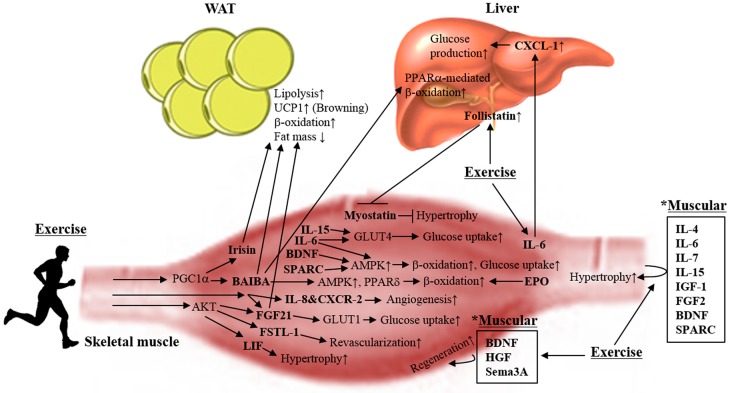Figure 2.
Exercise-induced myokines play critical roles in beneficial metabolic adaptations. Contracting skeletal muscles release myokines, and promote hypertrophy and myogenesis within muscle itself. The action of myokines for exercise-induced metabolic adaptation is responsible for promoting glucose uptake, glucose disposal, lipolysis, β-oxidation, angiogenesis, and revascularization. Subsequently, they exert systemic effects that improve lipid and glucose metabolism in white adipose tissue (WAT) and the liver. Specifically, muscular irisin, β-aminoisobutyric acid (BAIBA) and fibroblast growth factor 21 (FGF21) lead to the induction of “browning” in WAT that can counteract obesity and its associated metabolic diseases. UCP1: uncoupling protein 1; PGC1α: peroxisome proliferator-activated receptor gamma coactivator 1-α; FSTL-1: follistatin-related protein 1; LIF: leukemia inhibitory factor; BDNF: brain-derived neurotrophic factor; SPARC: secreted protein acidic and rich in cysteine; AMPK: AMP-activated protein kinase; PPARδ: peroxisome proliferator-activated receptor delta; GLUT1: glucose transporter 1; GLUT4: glucose transporter 4; CXCR-2: CXC chemokine receptor-2; CXCL-1: CXC chemokine ligand-1; EPO: erythropoietin; HGF: hepatocyte growth factor; Sema3A: semaphorin 3A; IGF-1: insulin-like growth factor 1; FGF2: fibroblast growth factor 2.

